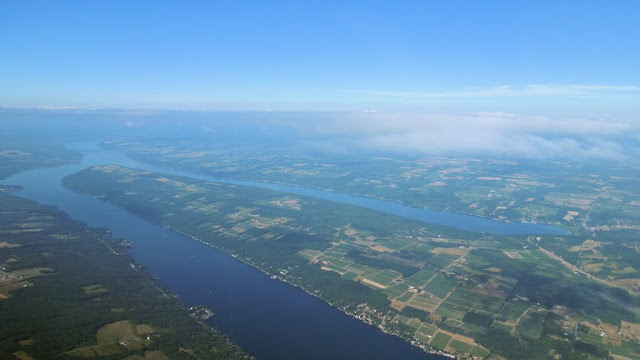Culture Clash
As a student still early in my aviation education, I witnessed a clash between pilot subcultures that made a significant impression on me. I was in the ramshackle terminal building of the Three Rivers Municipal Airport with my mentor, Dave. Dave owned a Super Decathlon, a tube and rag taildragger in which he was actively honing his skills in formation flight and aerobatics.
We encountered Tim, a FedEx pilot who moonlighted as the local instrument instructor. Casual conversation turned pointed when Tim learned that Dave was not instrument rated. He proceeded to argue that this made Dave fundamentally unsafe as a pilot. It made no difference to Tim that the basic panel in the Super D did not even possess the minimum instrumentation necessary for instrument flight.
From that moment onward, I found myself subconsciously categorizing pilots into two buckets: "taildragger types" who like to look out the window and fly for the sake of flying (even if they only fly trikes) and "instrument types" who always fly in the system. As a student and, later, a young aircraft owner, I placed myself solidly into the former category. Aviation publications like Flying solidified this schism in pilot mentality for me, serving up monthly articles from Lane Wallace about the magic and passion of flight that contrasted sharply with the by-the-numbers, instrument-centric treatises penned by Richard Collins.
Then I went and earned my instrument rating. Did my newfound ability to interpret an instrument approach plate suddenly make me averse to landing on grass? Of course not. There is no real reason for any of these facets of aviation to be mutually exclusive.
Maybe pilot disposition is not so readily categorized in black and white. Maybe, sometimes, the right day comes along to allow a sampling of both worlds.
ILS for Breakfast
| Date | Aircraft | Route of Flight | Time (hrs) | Total (hrs) |
| 17 Jul 2016 | N21481 | SDC (Sodus, NY) - IPT (Williamsport, PA) - 8N1 (Bethel, PA) - SDC | 4.2 | 1564.9 |
Bound for Williamsport Regional Airport in Pennsylvania, I cruised in the Warrior at 6,000' feet over the Finger Lakes of central New York on an instrument flight plan. Williamsport is, of course, home to Cloud 9, my favorite $100 hamburger destination.
 |
| Keuka Lake photographed from above Penn Yan. |
While en route, Williamsport went IFR with a 1000' foot overcast. Though not actually forecast, this was not exactly unexpected, either. With plenty of time before arrival, I pulled up the approach procedure for the ILS 27 at Williamsport and briefed it.
By the time I crossed the state line into Pennsylvania, I had lost all visual contact with the ground. I was not in instrument conditions, but would need to fly an approach into Williamsport. When Elmira passed me to New York Center, I affirmed that I had the weather at Williamsport and requested the ILS 27 approach.
 |
| Ground track from Sodus to Williamsport as captured by FlightAware |
The controller provided a vector to intercept the localizer and my interception was crisp despite the fact that he nearly ran me through the final approach course before assigning an intercept heading (note that sharp turn in the FlightAware track).
The ILS 27 approach at Williamsport is a bit unusual in that the final approach fix is 9.4 nautical miles east of the runway threshold (rather than the usual five-ish miles) and the decision altitude is 500 feet AGL, rather than the typical 200 feet. Higher minimums on this approach are most likely due to nearby terrain. I established myself on the approach and crossed the final approach fix well before descending through the cloud deck.
Although the field was still calling overcast conditions, the clouds were beginning to disintegrate as I passed through them.
"Cherokee Four Eight One, you're my first arrival of the morning. Can you provide a PIREP?" I did, noting that the cloud tops and bases were at 3,000 and 2,400 feet, respectively.
I realized that it was the first time I had ever flown an instrument approach to get breakfast. As usual, the fare prepared by Cloud 9 was outstanding. With that realization came the knowledge that my comfort level with instrument flying was steadily increasing.
Back in Time
One of my favorite past trips was to the Golden Age Air Museum, located on the turf-only Grimes Airport in Bethel, PA. After seven years, I decided that I was due for a return. Once finished with breakfast, I called the museum to request a report on field condition.
Paul Dougherty Sr, founder of the museum, chuckled kindly at my question. "It's as hard as a rock. We haven't had any rain in ages."
I departed VFR from Williamsport and threaded my way through growing breaks in the cloud deck to smoother air above.
Thirty minutes later, I was over the field and buffeted by wind flowing over a nearby ridge that the folks at Grimes simply refer to as "the mountain".
I am embarrassed to say that I cannot remember when I last landed on grass. As I rolled the Warrior's wheels onto the runway, I did not experience the usual forgiving yield of a turf landing. Paul did not exaggerate, the surface was more like baked clay than fairway.
The Golden Age Air Museum was founded in 1997 on Grimes Airport, a World War II era field. It was started as an effort to minimize the high cost of renting multiple hangars at larger airports. What may have begun as cost avoidance has resulted in the creation of a little slice of aeronautical heaven on Earth: a well maintained grass runway; a plethora of interesting, airworthy aircraft pre-dating World War II (at least in design if not always in actual fact); and an enthusiastic group of volunteers clearly happy to spend their time building, restoring, and maintaining the old airplanes. For a paltry five dollar admission, I was able to experience this wonderful place for an afternoon.
Rides are offered in this 1929 WACO GXE biplane.
 |
| Cue the old-timey music! Oh...wait, stop. There is a Spam can in the photo. How did that get there? |
With a loud roar, the WACO took to the sky, carrying some lucky soul on the ride of a lifetime.
Unfortunately, my timing was poor. Since my previous visit, the museum had constructed a Fokker Dr I triplane (above) and a Sopwith Pup, both of which were being disassembled for transport to Airventure in Oshkosh, WI by truck.
Even disassembled, I enjoyed many small details of the Fokker like this gorgeous wooden propeller.
Many World War I era aircraft flying today cheat a bit and use conventional radial engines rather than period-appropriate rotary engines. This Fokker was unmistakably equipped with a rotary.
The fine detail of this fuel valve on the SPAD XIII also caught my eye.
This Taylorcraft L2 still bore its information placard from the recent Sentimental Journey event in Lock Haven, PA.
Model: Taylorcraft L2M, 1943
Engine: Continental, 65 h.p.
Cost to Build: Cheap
Empty Wt: Too much
Gross Wt: Too little
Cruise Speed: Slow
Landing Speed: Slower
The Sopwith Pup was equipped with a period-appropriate instrument panel. There's just something appealing about an instrument panel made of something other than plastic (1970s era Piper and Cessna, I'm looking at you). To my eye, the craftsmanship at the Golden Age Air Museum is impeccable.
The open cockpit Taylor E2 Cub, grandfather to the iconic Piper J-3 Cub.
When I first visited in 2009, this Curtiss Jenny was nearly complete. Now finished, the airplane is gorgeous. It has been flying routinely for a few years and was fittingly featured in a documentary on the type. It is one of only six Jennys flying in the world.
The Breezy is probably the most aptly-named aircraft ever built. Think that I would prefer to be strapped in by something more elaborate than just a lap belt to fly one of these.
 |
| They didn't even charge bag fees! |
Suddenly Low Tech
Before returning to the air, I thanked everyone at the Golden Age Air Museum for their hospitality. I programmed the Williamson-Sodus Airport into the Garmin GPS, back taxied to the departure end of the grass runway, and did a run-up prior to takeoff. Midway down the runway, the Warrior was jolted mightily by a bump that tossed us skyward before the Warrior was completely ready to fly. As I crabbed into a mild right crosswind, the controls went mushy and I pushed the nose down to maintain airspeed. The Warrior settled slightly, but increased airflow over the wings restored responsiveness to the controls and I was able to assume a positive rate of climb.
Then, I noticed this:
Who would have thought that the programmers at Garmin included a well, heck, just go back to paper cipherin' error message in the GNS 430W?
Puzzled, I rebooted the 430W. The system still failed to achieve a lock. Still climbing, I was shaken by some turbulence from "the mountain". I happened to be looking at the 430W when it happened, saw it shift in the panel, then go completely dark. That bump on Grimes' hard grass runway must have literally knocked the GPS loose; modern high tech undone by old school turf.
Over Grimes Airport, I turned north to fly home the old fashioned way. Navigation would be trivial - fly north until reaching Lake Ontario, can't miss it. Realistically, I could have used my #2 VOR or Stratus/ForeFlight for navigation if I was truly stuck, but that was not the case.
I climbed to 10,500 feet to clear clouds. With the Warrior suddenly reduced to a single working radio, I monitored Guard and followed the compass home. It was just like the old days (except that I hold headings more tightly than I used to) and very much the antithesis of my IFR flight to Williamsport that morning.
It was all good. From 10,500 feet, those wind turbines looked really tiny.
 |
| The Susquehanna River |
After a couple of hours, the Williamson-Sodus Airport reappeared below. Back at the hangar, I re-seated the GNS-430W in its tray and tightened the locking screw. Good as new.
At the conclusion of the day, I had completed a well-flown ILS, eaten a terrific breakfast at my favorite fly-in restaurant, landed on grass, visited a wonderful vintage aircraft museum, and flown home without following the magenta line.
I know many pilots who belong to the aviation subcultures mentioned previously. There is nothing wrong with that, but I take great pleasure in knowing that I can happily exist in both. As long as an airplane is still involved, I savor all of it.








































No comments:
Post a Comment